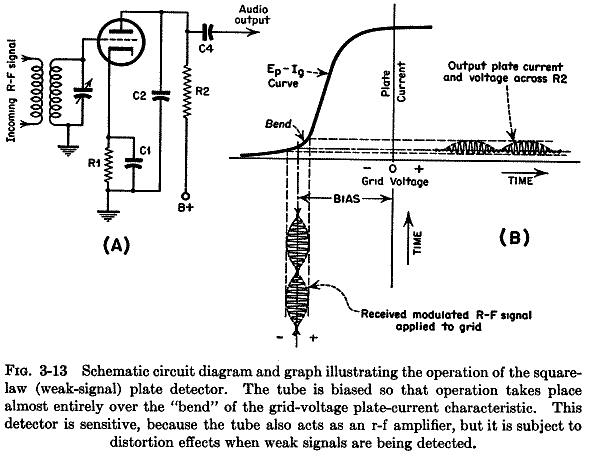schaub: W; Alpha-Standard
? schaub: W; Alpha-Standard
Can anyone explain how this radio does the AM detection ? Grid of REN804 ?
thanks for your attention,
Dirk Bladt
To thank the Author because you find the post helpful or well done.
Plate bend detector

Two (or more) circuits TRF sets used an anode bend detector. A description of this type of detectors may be found at "Ghriardi, A.A.: Receiver Circuitry and Operation, Rinehart, 4th printing, 1955".


Dietmar
To thank the Author because you find the post helpful or well done.
anode bend detection
A very big thank you for this cristal clear explanantion to you, Mr Rudolph.
Dirk Bladt
To thank the Author because you find the post helpful or well done.
schaub: W; Alpha-Standard
I am restoring an Alpha-Standard that was in a miserable state, especially the scale wheel. I am wondering if there was a kind of pointer in front of the scale to see the exact frequency? Otherwise the reading of the scale must have been very coarse. And was there a window (cellophane) to protect the scale?
Attachments:- Scale wheel (261 KB)
To thank the Author because you find the post helpful or well done.
